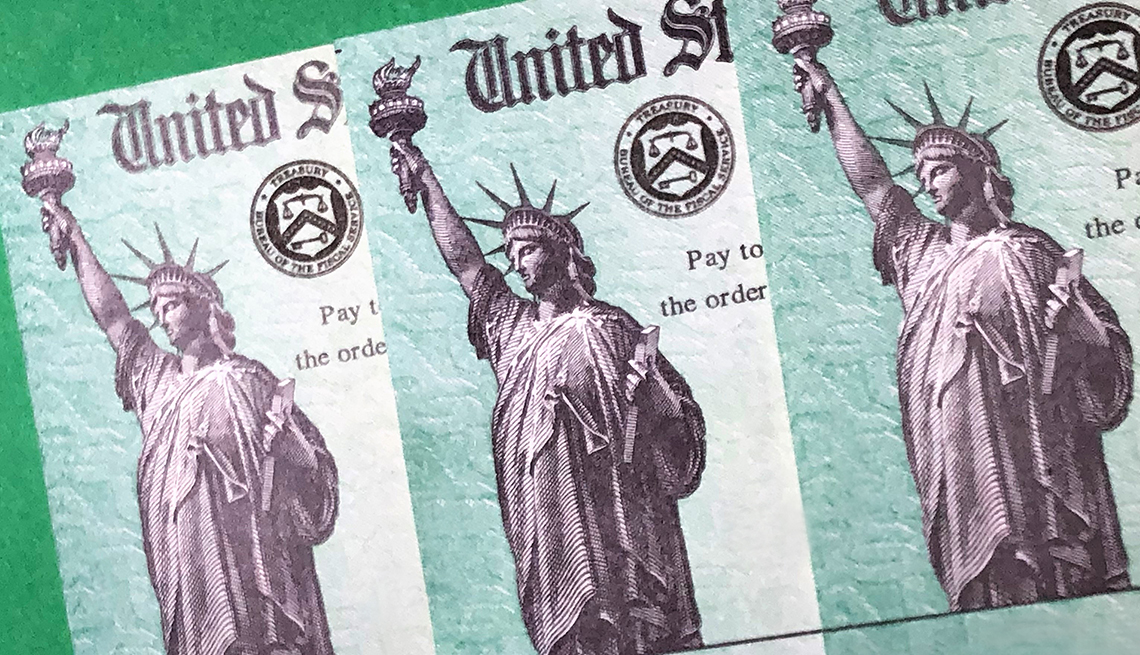Lawmakers released an estimated schedule for payments by paper check and direct deposit

ISTOCK / GETTY IMAGES
If you’re checking your mailbox or bank account for your coronavirus stimulus payment several times a day, you’re not alone: Much of the nation is, too.
Unfortunately, the Internal Revenue Service (IRS) wouldn’t divulge its exact schedule for sending stimulus payments to all eligible Americans via direct deposit, paper check, or Direct Express debit card. (We asked.) We can, however, share an estimated timeline as of April 16 released by the Ways & Means Committee, the chief tax-writing committee in the U.S. House of Representatives. The IRS declined to confirm the accuracy of the timeline. (We asked.)
The week of April 13
You’ll likely get your payment faster if you have direct deposit information for your bank account on file with the IRS. The week of April 13, the IRS started to send 80 million stimulus payments to eligible Americans via direct deposit. The first wave of recipients had filed federal tax returns for 2018 or 2019 that included their direct deposit information. This initial round included Social Security beneficiaries who filed tax returns in 2018 or 2019.
As of April 17, the IRS says it had delivered 88.1 million stimulus payments worth nearly $158 billion. In total, the IRS expects to send out more than 150 million payments to eligible Americans.
The week of April 20
Beginning the week of April 20, the IRS planned to start making additional rounds of weekly payments by direct deposit to people who provide direct deposit information on IRS.gov. The IRS also began issuing paper checks on a weekly basis to individuals who have not provided direct deposit information but for whom the IRS has a mailing address. Paper checks will be issued at a rate of about 5 million per week, which could take up to 20 weeks. The checks will be issued to the people with the lowest incomes first. Based on the Ways & Means estimated timeline, it could take until September to mail out all of the payments by paper check.
End of April
At the end of April, adult Social Security retirement, survivor, and disability insurance (SSDI) beneficiaries who did not file tax returns in 2018 or 2019 will receive their payments if they receive their benefits via direct deposit. (Nearly 99 percent of Social Security beneficiaries use direct deposit.)
Early May
The Treasury Department has announced that adult Supplemental Security Income (SSI) recipients will receive their payments by early May, in the same way, they receive their normal benefits.
If, for some reason, your bank account information was incorrect — if you’ve changed banks, for instance — the IRS will send you a paper check instead. Weekly payments will continue until all eligible people get their payments, according to the Ways & Means timeline.
Save 25% when you join AARP and enroll in Automatic Renewal for first year. Get instant access to discounts, programs, services, and the information you need to benefit every area of your life.
What if I don’t get my stimulus payment?
Start by checking the IRS Get My Payment web tool for determining whether your payment has been issued. The IRS only updates the tool once a day; you won’t get anything but frustration by checking several times a day.
If you’re concerned the check was lost in the mail or the direct deposit was misdirected, the IRS says it will mail a letter to your address 15 days after payment was issued. If you receive the letter but never received payment (or the payment was in the wrong amount), the IRS says the letter will have information on whom to contact.
If you’re not required to file a tax return but you think you’re owed a stimulus payment, enter your personal information into the Non-Filers tool on IRS.gov.
And if you are required to file a tax return, file one for 2019 so the IRS can determine if you’re eligible based on your 2019 income.
Finally, keep in mind that some people simply aren’t eligible for stimulus payments because, for example, they make too much money, are claimed as dependents on someone else’s tax return, or they don’t have a valid Social Security number.
If you do get a stimulus check in the mail, examine it carefully. Fraudsters are always looking for ways to make a buck off of imitations. The Secret Service, which investigates counterfeiting as well as protects top officials, has distributed photos and descriptions of genuine stimulus checks.
